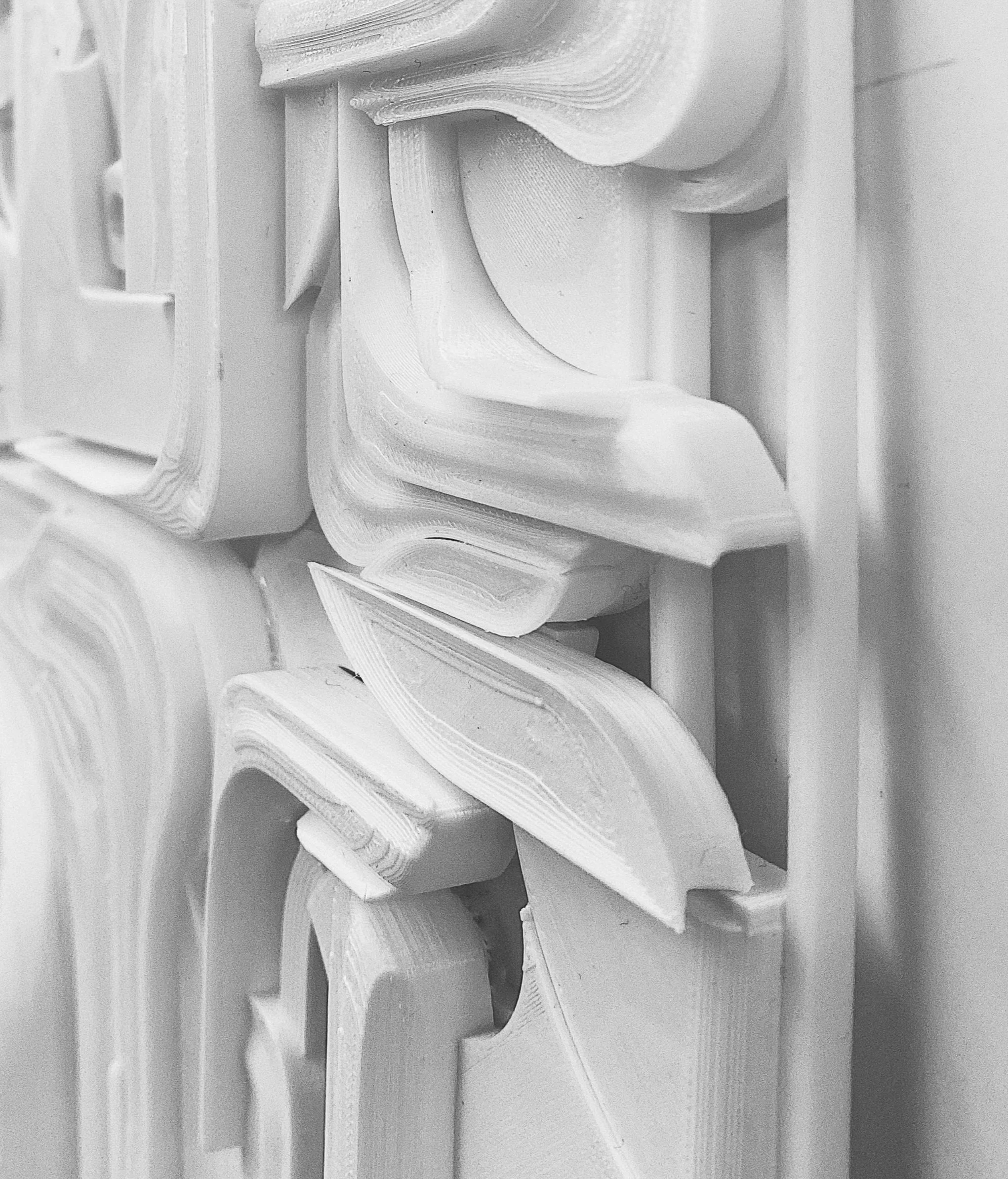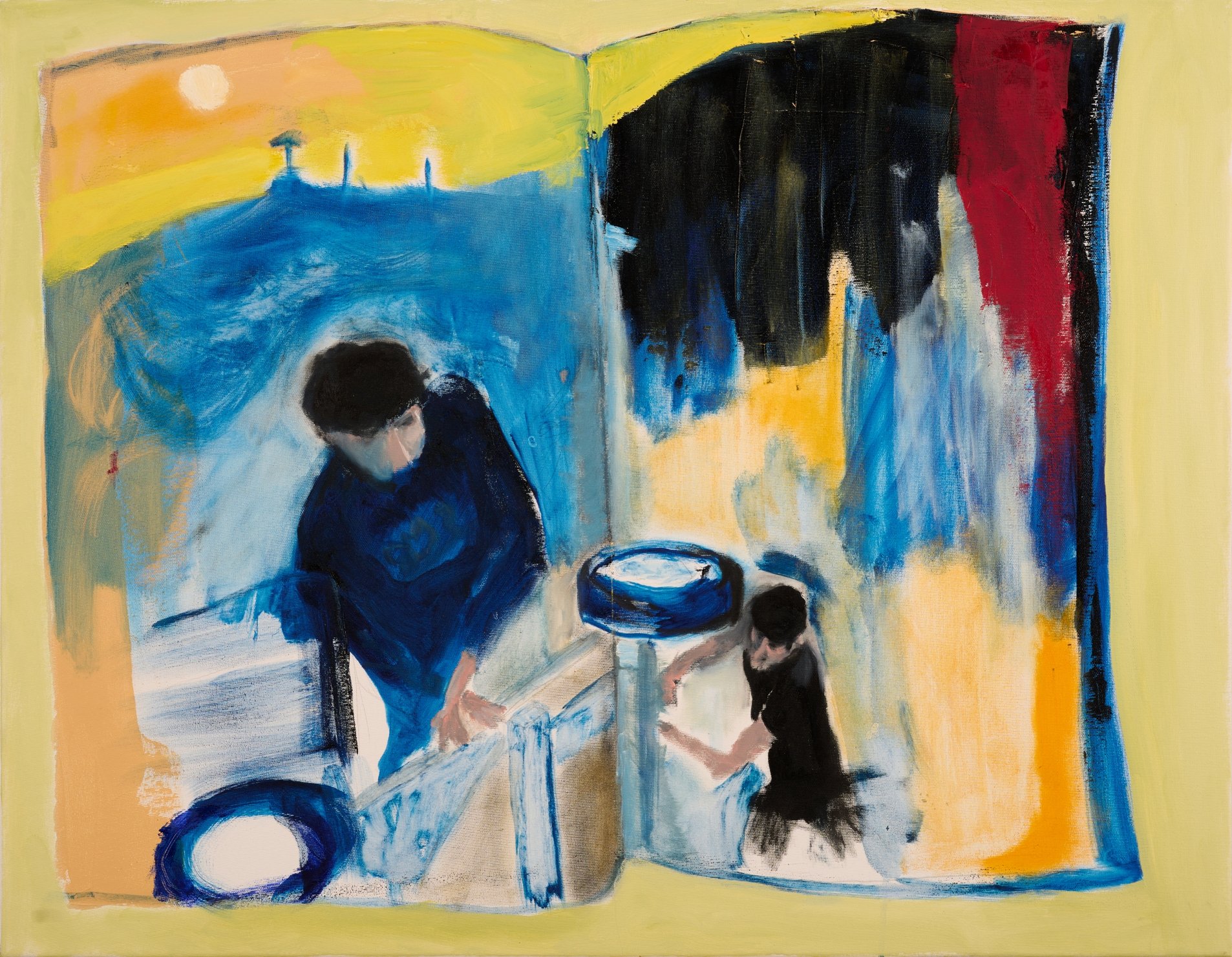Ryan Tesluk is an Oakland and LA-based interdisciplinary artist and storyteller. Ryan Tesluk's art provides viewers with honest, unadulterated content that triggers a plethora of emotions. While many individuals may be uncomfortable with what they see, the fact that some may feel such discomfort when looking at his paintings means Tesluk is doing something right.
INTERVIEW | Meiqi Zhang
Meiqi Zhang is an interdisciplinary artist, and her journey into this unique field has been a thrilling exploration of the intersection of science and art. Her passion for technology and creativity led her to this path. As an artist, she creates a wide range of artistic works that often revolve around living organisms and post-nature concepts. Her studio serves as the epicenter of her creative endeavors, where she brings her imaginative visions to life.
INTERVIEW | Lifu Hu
Lifu Hu, originally from Chengdu, China, and now based in New York, works predominantly around her reflections on self-emotions and intimate relationships, exploring her connections with lovers, family, and her own being. Lifu focuses on conceptual photography, still life, and documentary photography, creating visually captivating stories that leave a lasting impression.
INTERVIEW | Jessalyn Finch
Jessalyn Finch has been a visual artist since 2009. Post-pandemic, Finch continued to focus on the conceptual work of body perception and voyeurism. Her body of work combines large-scale drawing and sculpture to investigate our experiences and perceptions of the human body. Her current work explores body dysmorphia, identity, and sense of self. The themes are meant to be a catalyst for discussion and connection through shared experience.
INTERVIEW | Madison Higginbotham
Madison Higginbotham, known as Mads, is a self-taught painter based out of Vancouver, Canada. She naturally gravitates towards portraiture and figurativism. She believes it’s the most captivating subject to paint. With its inherent mutuality, even the most mundane moments can be portrayed as powerful and beautiful. She looks at these moments as if time has slowed and the perfect soundtrack has been applied.
INTERVIEW | Jiaming You
Jiaming You is a painter and installation artist based in Chicago. You utilizes found imagery and photos taken by themselves to construct scenes of bodies in non-existent scenarios as an attempt to critique the limiting nature of social norms in depicting individuality and uses their experience and positionality as a non-binary immigrant as a source of knowledge and site of exploration to the confines of social norms and the distribution of power.
INTERVIEW | Xuechen Chen
Xuechen Chen, a dynamic architect and visionary visual artist, was born in China and is currently based in New York. Central to her work is the concept of layering, where elements like perspective, emotion, and media converge to create entirely new forms of digital art. Xuechen's belief in the power of layering leads to innovative, emotionally resonant creations.
INTERVIEW | Esther Tang
Esther Tang is an illustrator and designer based in New York City. Her approach involves seamlessly blending traditional drawing techniques with modern computer-aided methods to craft her pieces. As an illustrator, she thinks that her value resides in expressing her opinions and presenting issues through her work, inspiring her audience, and igniting discussions.
INTERVIEW | Yu Chen
Yu Chen is a visual artist, designer, and lecturer with an MFA Degree from the School of the Art Institute of Chicago. His focus is on branding, art direction, and 3D graphics design. His project Let Parents Stay focuses on helping the people of Jinling Village, a designated poverty-stricken area - to inherit and promote the culture of Han Embroidery, a traditional technique from China.
INTERVIEW | Joanna Hoge
Joanna Hoge (she/they) is a queer artist and designer based in Denver, Colorado. They apply their background in psychology and interest in medicine to create works that explore the dynamic between subjective identity and objectifiable body. Hoge's work is largely inspired by the division of somatic and psychological experiences in Western culture.
INTERVIEW | Tokie Wang
Tokie Wang is a Chinese choreographer, dancer, and visual artist currently based in Los Angeles. "RECORDING IN PROCESS" is a thought-provoking art piece that delves into the impact of surveillance systems on our daily lives. The project aims to recreate a "living space" by discreetly placing multiple hidden cameras to record performers while simultaneously live-streaming the recordings within the same space.
INTERVIEW | Hall'Makwanda
Hall'Makwanda is a collective composed of Julia Hall and Matisse Makwanda, both of whom are transdisciplinary artists. Their individual work led them to explore artistic collaboration in 2016. With a keen interest in symbolism, experimental languages, and new media, the duo explores the realms of alchemy and active spirituality; each creation serves as an opportunity to delve into the multidimensionality of human existence.
INTERVIEW | Shiqing Chen
Shiqing Chen uses multiple visual languages and elements to communicate through print, website, and digital media. Her works focus on cross-medium storytelling and visual communication. During the pandemic, she became interested in the organic errors and uncertainties of data. By leveraging available technologies, she aims to present data through sounds, games, performances, and other means.
INTERVIEW | Connor Daly
Connor Daly is a British fine art photographer from Jersey (Channel Islands), currently based in the UK. His work explores varying levels of colour and compositional effects that provoke spatial ambiguity, using a painterly and abstract style that is evocative of nostalgia, memory, and the passing of time. Furthermore, his work is predominantly concerned with the depiction of a space, exploring broad visual styles.
INTERVIEW | Hushang Omidizadeh
Hushang Omidizadeh, born in 1968, is a multidisciplinary artist based in Germany. In his art, Hushang Omidizadeh delves into diverse facets of human nature, interpersonal relationships, diversity, and human needs. In his series "SURFACE," the artist abandons the use of traditional brushes and instead directly applies color to his models' bodies. These colors are then transferred onto the canvas when pressed, leaving imprints of the models' own bodies.
INTERVIEW | Ben Große-Johannböcke
With a background in tattooing, Ben Große-Johannböcke, born in Melle, Germany, in 2002, explores the relationship between musical compositions and visual arts. A large part of his work consists of graphite drawings on canvas, isolated mark-making with neither form nor colour. These patterns/structures aim to visually recreate certain parts of the musical composition they respond to.
INTERVIEW | Varvara Sosedova
Varvara Sosedova is a Russian artist, based in Kaliningrad, Russia. Varia Stern’s practice is the result of an interdisciplinary exploration of historical and contemporary phenomena. Using ancient oriental philosophical practices, she explores the human connection to the world, exposing historical and cultural parallels in history. She uses the techniques of symbolism and creates the interpenetration of different cultures by mashing them up.
INTERVIEW | Anna Salenko
Anna Salenko (b. 1990, Vladivostok, based in Hong Kong ) shares her unique style as a fusion of cultures and captures the intersection of the visible world with our inner thoughts and perceptions. Anna's art is a reflection of a fleeting moment in the human mind. Anna Salenko's works embody philosophy with the potential to make a difference in the world and transform the lives of those connected to her art.
INTERVIEW | Ofer Shomron
Art took hold of Ofer Shomron at the advanced age of 60. Recurring dreams about colors flowing around him convinced Ofer to embark on a new path. He is an avid colorist. He loves color and exploring color and likes to place strong, expressive colors side by side. His curiosity about the world is the motivation and energy for his artistic quest. He mostly paints in oil and occasionally uses a mixed technique.
INTERVIEW | Andrés Mario de Varona
Andrés Mario de Varona was born in 1996 and grew up in Miami as a first-generation Cuban-American with two Cuban families. Art is a tool for Andrés to measure cycles of indignation and healing, our growth as human beings, and as a way to record victories. What he aims to create is an attempt to enter the collective human experience, as well as an access point into himself.































